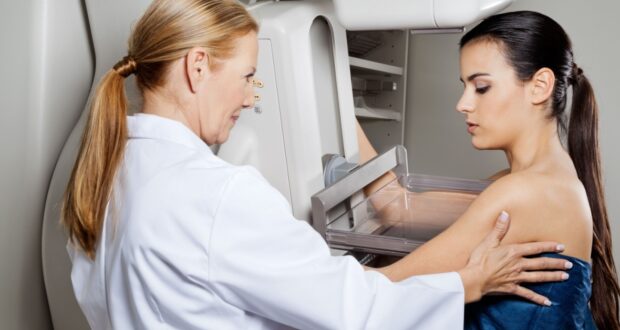By: Red Hot Mamas
Published: March 14, 2024
“Our life is March weather, savage and serene in one hour.”
-Ralph Waldo Emerson
Dear Red Hot Mamas,
Everyone should be proactive about their health, In fact, the effort that we put into incorporating good health measures, most of the time, becomes a benefit to our long-term health.
Breast cancer is the second leading cause of death from cancer in American women. It is a disease in which malignant (cancer) cells form in the tissues of the breast. Different factors increase or decrease the risk of breast cancer.
According to the Susan G. Komen Foundation, in 2024, it is estimated among women in the United States there will be:
- 310,720 new cases of invasive breast cancer (This includes new cases of primary breast cancer, but not breast cancer recurrences.)
- 56,500 new cases of ductal carcinoma in situ (DCIS), a non-invasive breast cancer
- 42,250 breast cancer deaths
It is extremely important to understand what the risk factors are in your own case. And some women will get breast cancer even without any risk factors.
Your chances of developing breast cancer are increased if:
- You are over 50. The risk for breast cancer increases with age;
- Genetic mutations – inherited changes to certain genes (BRCA 1 and BRCA 2);
- Starting menstrual periods before age 12 and starting menopause after age 55;
- Having dense breasts which make it harder to see tumors on mammograms;
- Relatives have had breast cancer (mother, sister, or daughter (first degree relatives);
- Radiation therapy to the chest or breasts;
- Exposure to the drug diethylstilbestrol (DES) while pregnant
Other risk factors which you can change:
- Not being physically active puts you at higher risk of getting breast cancer;
- Being overweight or having obesity after menopause;
- You had your first child late in life, after age 30;
- Drinking alcohol
Talk to your doctor about ways to reduce your risks.
One preventive health measure is breast cancer screening. Breast cancer screening tests are used to look for signs of breast cancer before or when a person does not have symptoms. Women who have a strong family history or a personal history of cancer or other risk factors may also be recommended to have genetic testing. If cancer is found at an early stage it can be treated and may be cured.
Mammography is the most common screening test for breast cancer, and it can detect cancer years earlier than clinical examination. A mammogram is an X-ray of the breast. Doctors use a mammogram to look for early signs of breast cancer. Regular mammograms can find breast cancer early, sometimes up to three years before it can be felt. Having regular mammograms can lower the risk of dying from breast cancer.
The American Cancer Society recommends mammograms:
- Every year (if a woman chooses to do so) ages 40-44;
- Every year ages 45-54;
- Every 2 years (or every year if a woman chooses to do so) starting at age 55, for as long as a woman is in good health.
If your mammogram shows an abnormality, you may be given additional diagnostic mammography, breast ultrasound and occasionally breast MRI.
Breast Ultrasound
A breast ultrasound is a painless procedure that uses sound waves to make images of the inside of your breast. The sound waves bounce off surfaces in your body, and the “echoes” are recorded to make video or photographs.
Breast Magnetic Resonance Imaging (MRI)
A breast MRI uses magnets and radio waves to take pictures of the breast. Breast MRI is used along with mammograms to screen women who are at high risk for getting breast cancer.
Other Exams
Clinical Breast Exam
A clinical breast exam is an examination by a doctor or nurse, who uses his or her hands to feel for lumps or other changes.
Breast Self-Exam
Being familiar with how your breasts look and feel can help you notice symptoms such as lumps, pain, or changes in size that may be of concern. These could include changes found during a breast self-exam. You should report any changes that you notice to your doctor or health care provider. Breast self-exams should be done each month.
In closing, please remember that regular screening with mammography helps find cancer early when it is still treatable and oftentimes curable.
Good Health to You All,
Karen Giblin
 Red Hot Mamas In Charge of Change.
Red Hot Mamas In Charge of Change.




